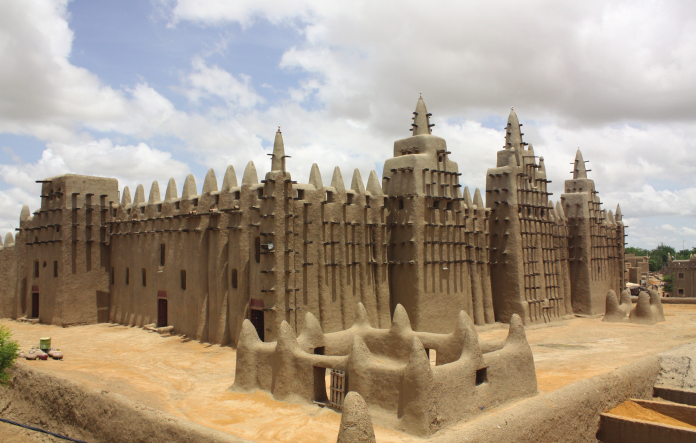For the first time since its creation in 1955 by Arnold Bold, documenta XIV will be held in two locations: Athens, the emblematic capital of the Greek city, and the historic site of Kassel. An audacious choice by Artistic Director Adam Szymczyk, sure to leave a lasting impression.
For the record, the five-yearly event was initiated by the urgent need to address the trauma caused by the Nazi regime, with the ambition of reconciling the German public with pre-war Western modern art. Over the decades, documenta opened up to new horizons. Contemporary themes were highlighted by artists from all over the world.
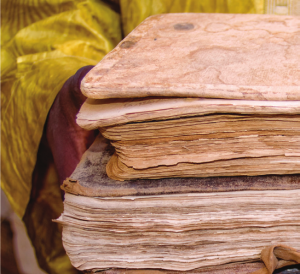
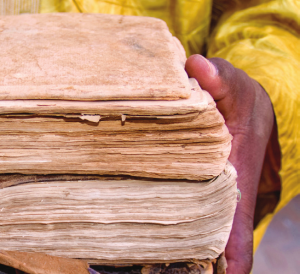
Long-awaited by the art world, this unique event has become an archive in that it addresses, through artifacts, forums and debates, the economic and social dilemmas and cultural issues facing Europe in particular and the world in general.
economic and social dilemmas and cultural issues facing Europe in particular, and the world in general.
So it's hardly surprising that this prestigious setting should be chosen to host the "Learning from Timbuktu" project. Designed by Igo Diarra, director of the Centre d'Art La Medina in Bamako, Mali. Led by artists Boubacar Sadeck Najim, Abdoulaye Ndoye, Abdou Ouologuem, Seydou Camara and Mamary Diallo, "Learning from Timbuktu" echoes the cultural resistance of a population struck by an unprecedented crisis.
In this context, every exhibition space is a symbol, such as the famous Gennadius Library in Athens, named after the diplomat, bibliophile and donor Joannes Gennadius. This place of learning houses, among other things, a phenomenal collection of works tracing the history of Greece from Antiquity to the 20th century, a unique collection of 19th-century travel journals and documents bequeathed by Nobel Prize laureates
Giorgos Seferis, Odysseas Elytis, writer and historian Elias Petropoulos and German archaeologist Heinrich Schliemann.
As a reminder, in Timbuktu, each family is the custodian of centuries-old manuscripts dealing with all fields of thought and research. Treatises on medicine or astronomy
astronomy, letters, poems or theology are jealously preserved and handed down from generation to generation. This makes each home the shelf of a singular library
library on the scale of a city.
In the Cité Lumière, "artists and scientists met, discussed, shared knowledge, in complete freedom, under the instigation of scholars such as Ahmed Baba..."; Ahmed Baba who gave his name to the Institut des Hautes Etudes et de recherche islamique and whose former director Abdoul Kader Haïdara, helped by the locals, was the undisputed hero of the rescue of thousands of manuscripts, during the ransacking of the city by extremist movements in 2013.
In Timbuktu, copyists used to be paid handsomely. As guardian of the temple, Boubacar Sadeck Najim, nicknamed the eternal copyist by his peers, perpetuates the tradition of this "beautiful writing representing the language of the hand and the joy of the heart", according to a phrase from the City of 333 Saints.
ART & CULTURE
While Mamary Diallo finely transposes the city's architecture onto blocks of salt, so precious in the Sahara desert, photographer Seydou Camara immortalizes the magnificence of an architectural heritage listed as a UNESCO World Heritage Site. He also reveals the old trunks where the parchments are kept, the goatskin covers, the writing instruments made of bird feathers, bamboo or small reed branches, the small ornate calabashes used as inkwells... and the beauty of the scribes' agile hands.

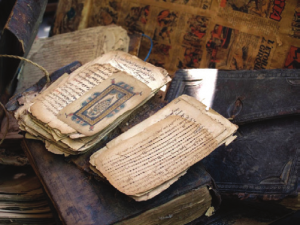
Through the prism of his eyes, he gives us the illusion of a stopover in the learned city. Abdou Oueloguem, painter, sculptor, costume designer, actor and scenographer, explores the many facets of human division and the aspiration to uniqueness. Finally, Abdoulaye Ndoye's "archive blocks" address the problem of the destruction of our memory and the indifference of the establishment to the intelligent conservation of our archives.
To stimulate dialogue between related universes, another library is built, consisting of "145 lithographic limestone slabs bearing all the words of a newspaper
that has already been published as a book and has been condemned to disappear" in the gardens of the Gennadius library.
The questioning continues with the screening, in the same venue, of a film by Ross Birrell, originally conceived by Charles Rennie Mackintosh and dedicated to the recent destruction by fire of the Glasgow School of Art library.
Interior courtyard of the Great Mosque of Djenné, Mali.
Timbuktu Manuscript
@ Seydou Camara, 2013. Courtesy Galerie Medina.
ART & CULTURE
Great Mosque of Djénné, Mali
@ Seydou Camara, 2013. Courtesy Galerie Medina.
From Bamako to Kassel, Art with fists!
One evening in 2007, after a lively discussion on the sidewalk over traditional mint tea, Igo Diarra suggested hanging his work on the faded walls of the ECICA (Ecole centrale pour l'industrie, le commerce central et l'administration) on Boulevard du peuple. At the time, he had no idea of the significance of this act in the working-class district of Medine. Medine, a melting pot of artistic, philosophical and literary thought in the wake
of independence; Medine, land of the dandies of the 60s, precursors of fashion and home to writers, photographers, musicians and early politicians; Medine, which still remembers Amadou Ampâthé Bah, Malick Sidibé and the late Ali Farka Touré.
In 2009, the decision was taken to lay the foundations of what would become, over the years, one of the leading venues on Bamako's contemporary art scene, and one whose activity would continue to grow as the country went through successive crises, despite the fear, the horror of murderous attacks and the succession of days of national mourning.
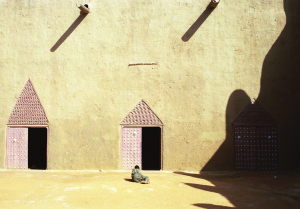
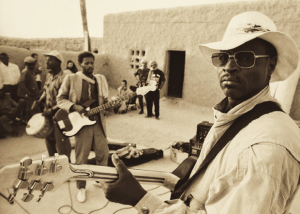
@ Seydou Camara, 2013. Courtesy Galerie Medina.
Aux Arts citoyens! Such seems to be the clamor that will henceforth rise above this bastion of artistic activism. In November 2011, the "Témoins" exhibition brings together artists from the four corners of the African continent. Participants include Samy Balogi from the Democratic Republic of Congo, Alvin Dondo from Zimbabwe, Monique Pelze from South Africa, Abraham Onorlode Oghobasse from Nigeria and Michael from Ethiopia.
In 2012, the Kalan Kadi children's literature festival was launched in Bamako. The traveling exhibition created for the occasion received contributions from all Malian cartoonists and illustrators. Its title, La Paix, sounded like a warning to the coup d'état that would occur a few months later. Far from being discouraged, the art center continued to organize events. Press crisis is presented at the Maison de la Presse.
The "Street art" work, 1 million 243 km2, corresponding to the surface area of Mali, is displayed on the gallery steps in response to the partition of the country. Despite the imposition of a state of emergency, the program of "Sacrifice Ultime", a vibrant tribute to the men sacrificed in the septentrion, is maintained.
Ali Farka Toure
@ Seydou Camara, 2013. Courtesy Galerie Medina.
2013, destruction of Timbuktu's mausoleums: for a month, the Medina transforms itself into a research laboratory, hosting the International Manuscript Workshop around the event Yesterday, Today and Tomorrow: "Manuscripts". An open door on the city, the public is invited to enter for a journey through time, inspired by one of the world's greatest scholarly cities. Debate, exchange, share, learn, transmit, write, in complete freedom, in the atmosphere of a modern Medersa, thousands of feet from the architectural remains of Sankoré University.
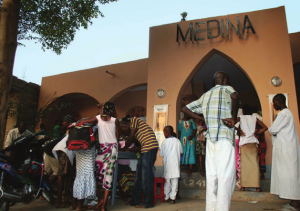

2013 also marks the first major post-crisis activity Transition Foto Mali. 12 photographers revisit the past year of crisis, substituting images for discourse. The challenge is to exorcise the emotions of a population still in shock, and to put words to the unspeakable.
From East to West, North to South, the photographs received a mixed, but never indifferent, reception, prompting unexpected reactions. They were hung on the walls of the National Assembly in Bamako, in Kati where the military headquarters were located, in Sikasso, Kayes, Ségou, Mopti, Badiangara, Konna and Sévaré.
@ Thomas Dorn
They were displayed in Gao and Asongho on riverside pirogues, in Djenné on the walls of the Mosque, a listed monument, on the door of the Askias Tombs, in Timbuktu, Place de l'indépendance, on the Peace Monument, on the walls of the Ahmed Baba Center and even at the market.
During this period, cultural effervescence never waned. Music was no exception.
The determination shown by artists of all stripes to perform on all available stages, even if it means creating new ones, despite their international commitments, urges the population to resist passively in the face of extremism. Gathering together is a risk. They take it to experience a moment of humanity, the ultimate
a last stand against despair, with Art in their fists!
Ali Farka Touré, the three-time Grammy Award-winning virtuoso, will bear witness to this in Kassel on behalf of all!
"For some people Timbuktu is a place at the
end of nowhere. But it's not true. I'm from
Timbuktu and I can tell you that it's right in
the center of the World. "
Ali FarKa Touré, 1939-2006


